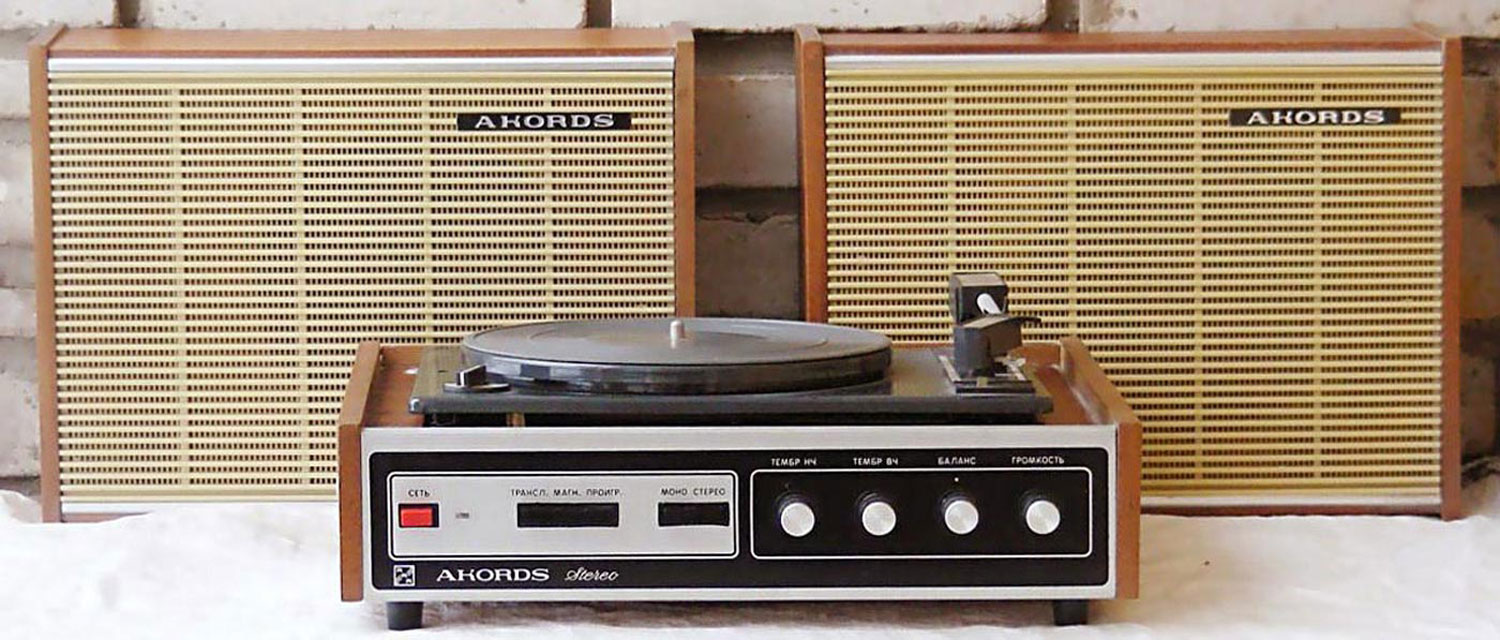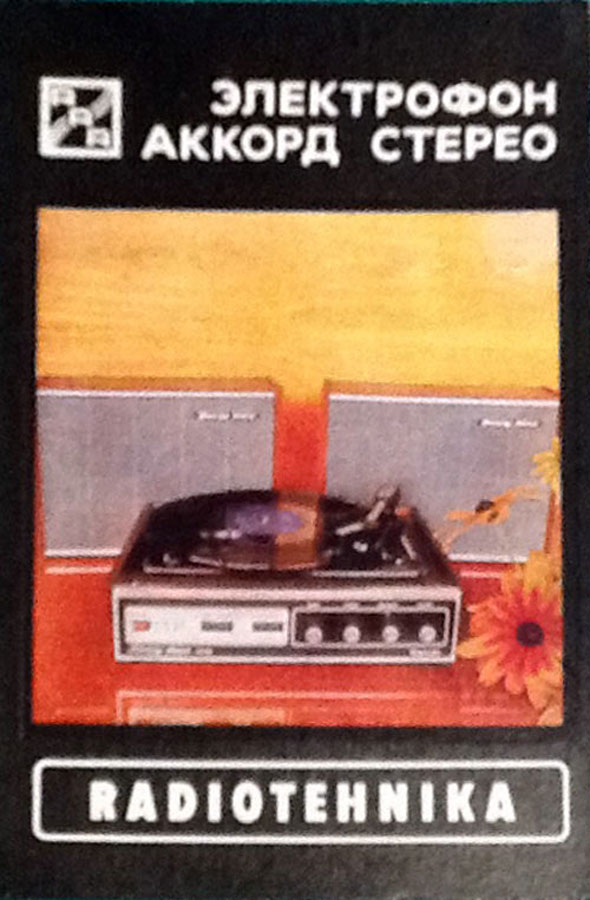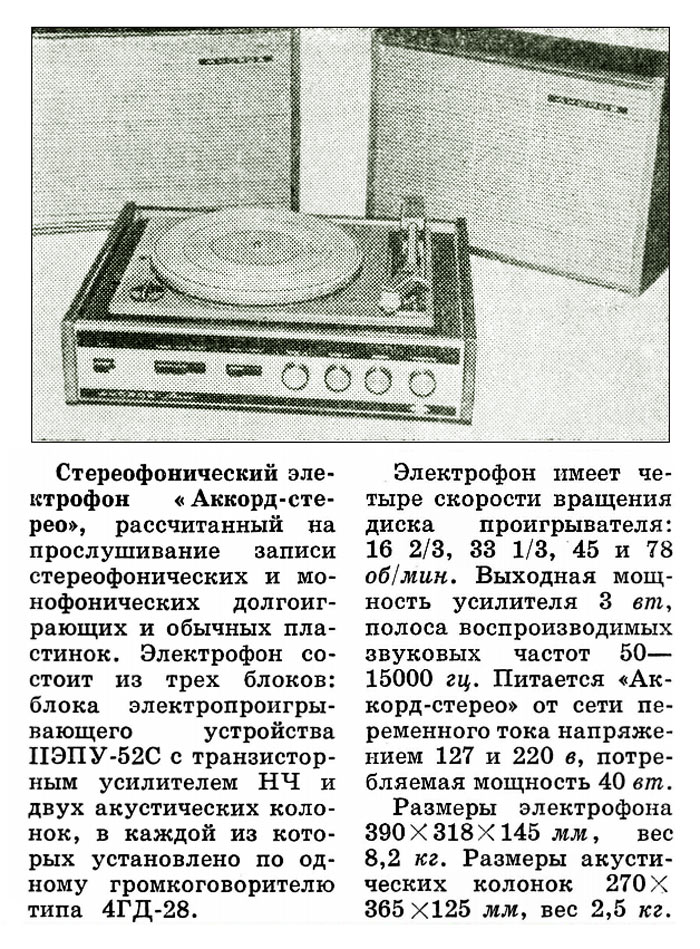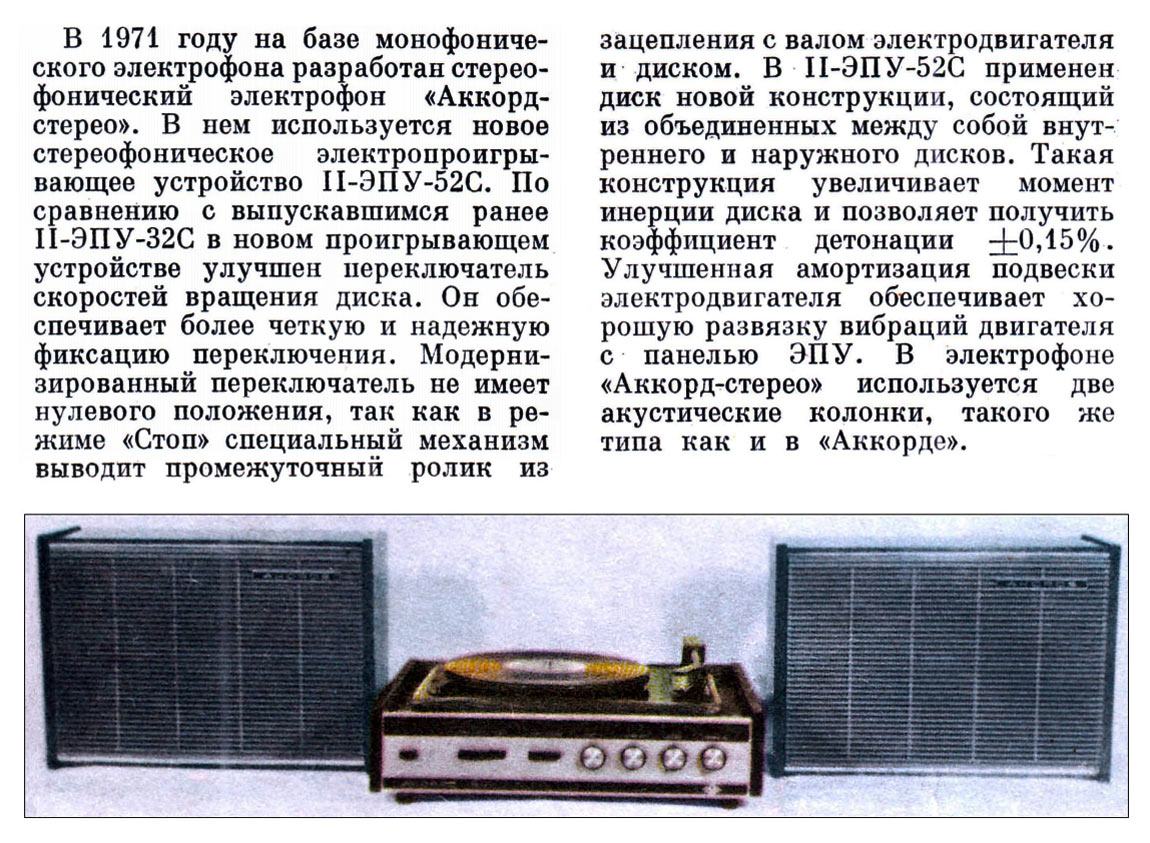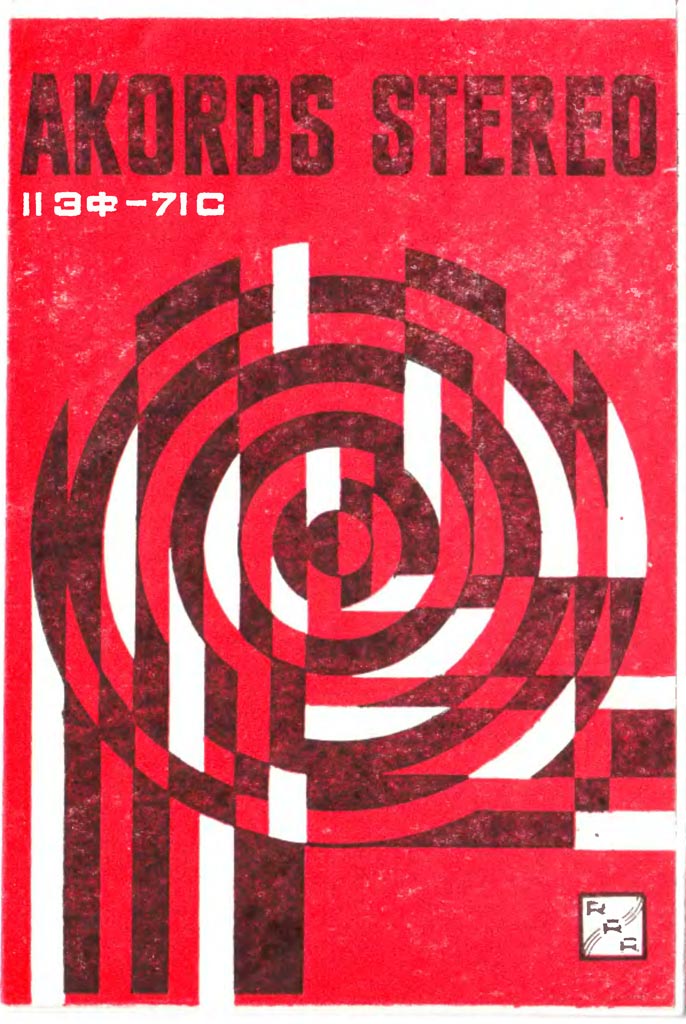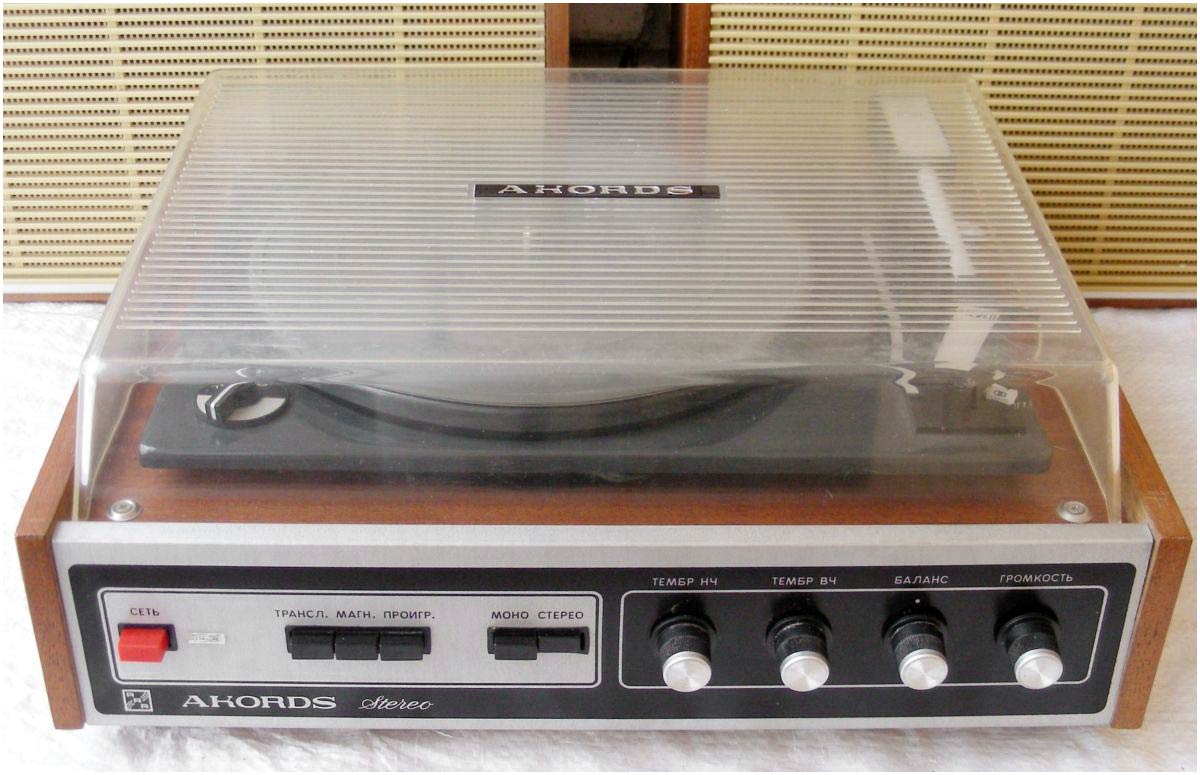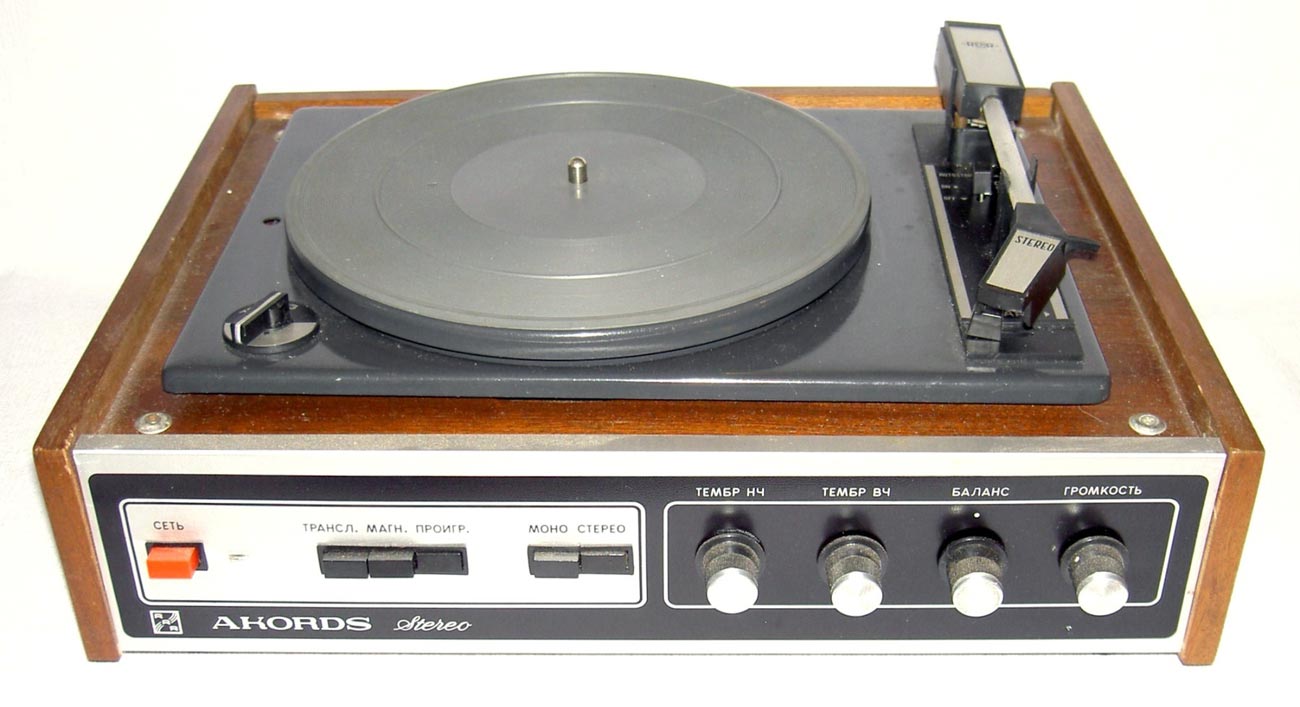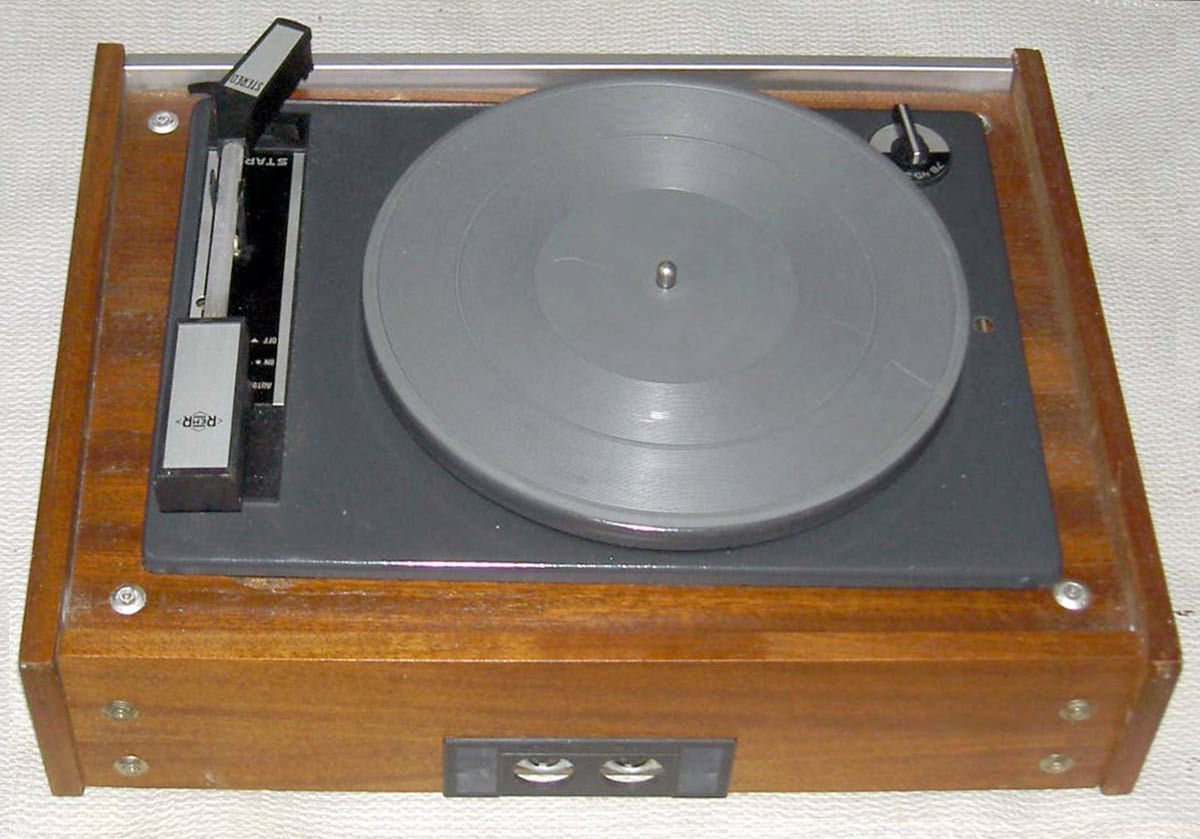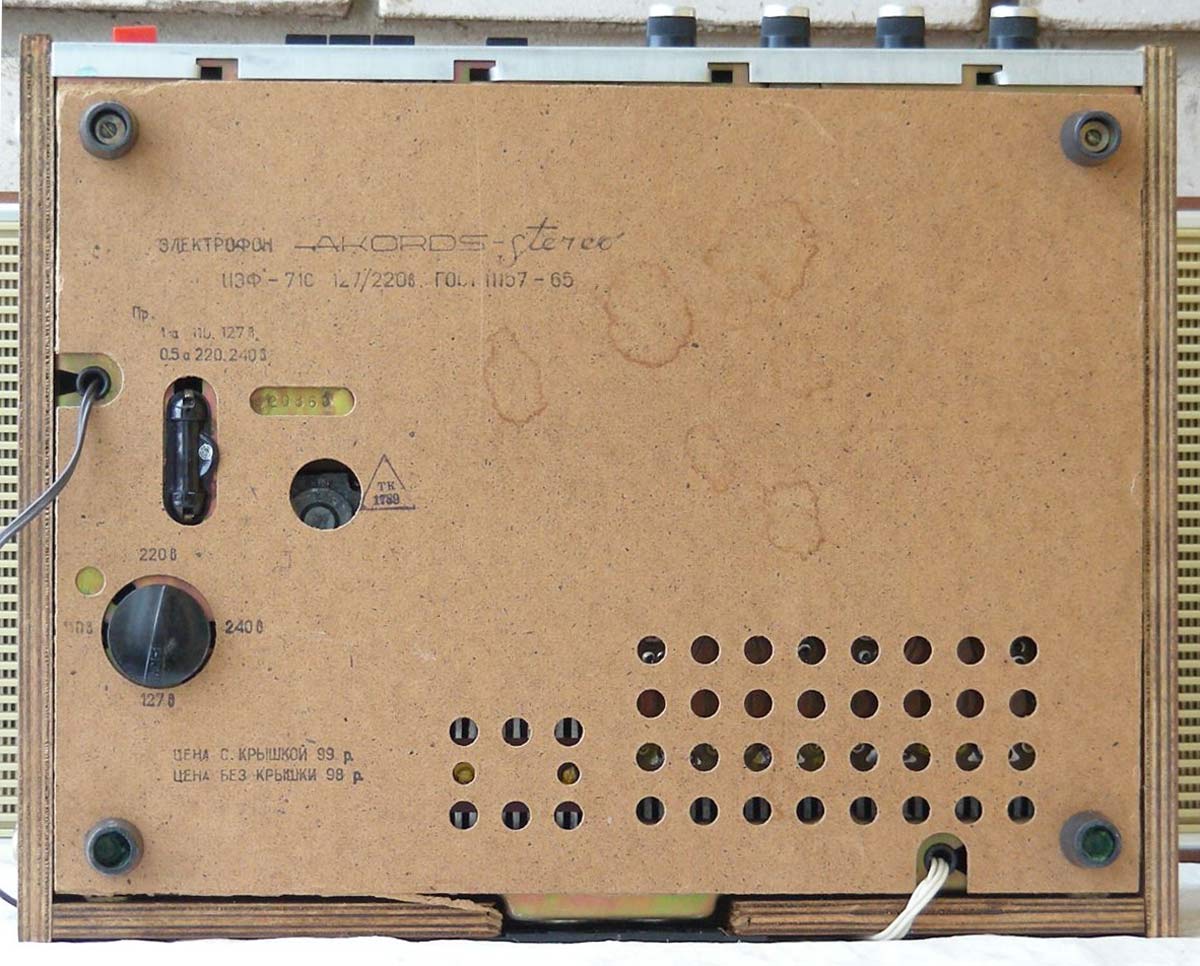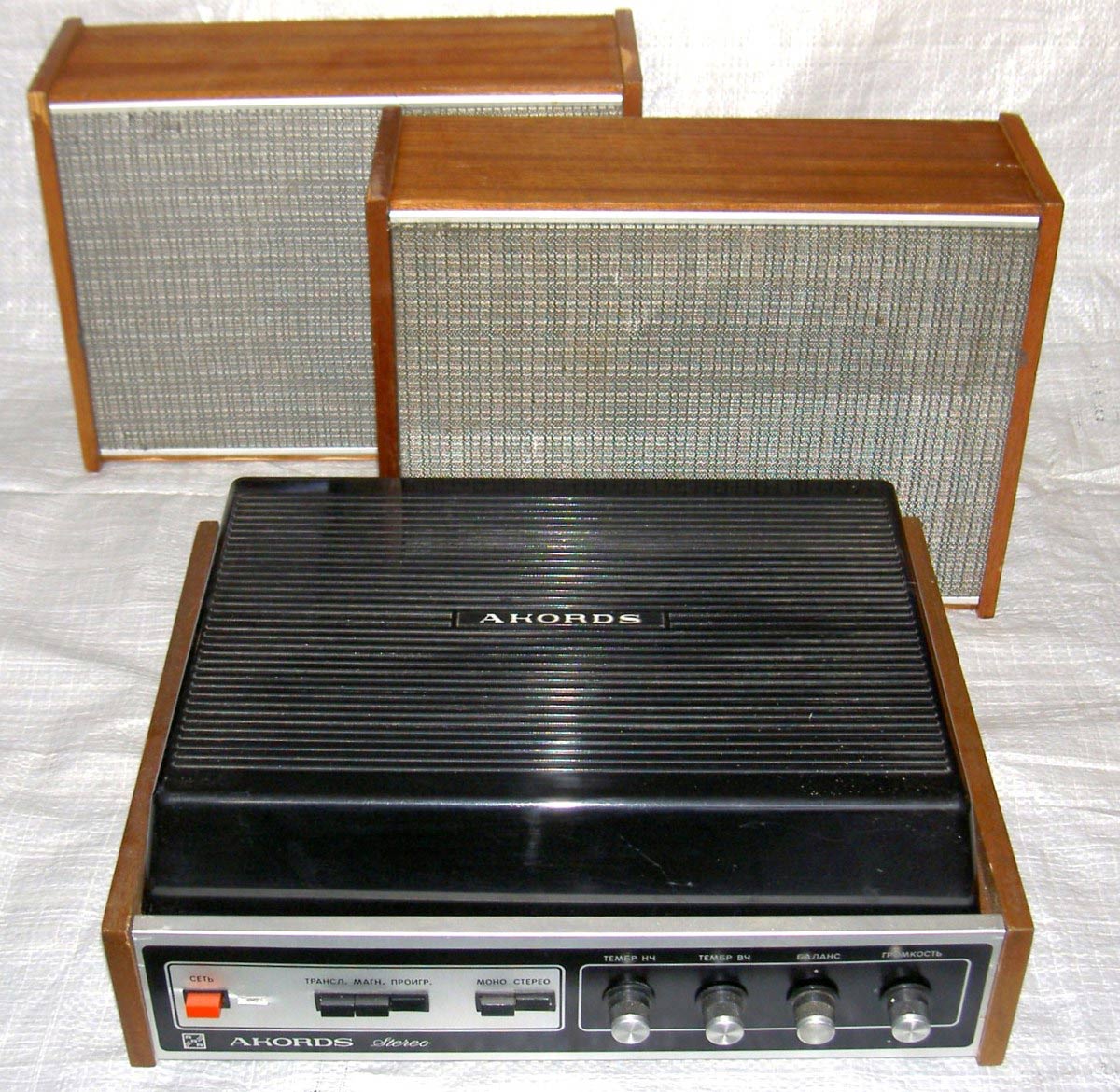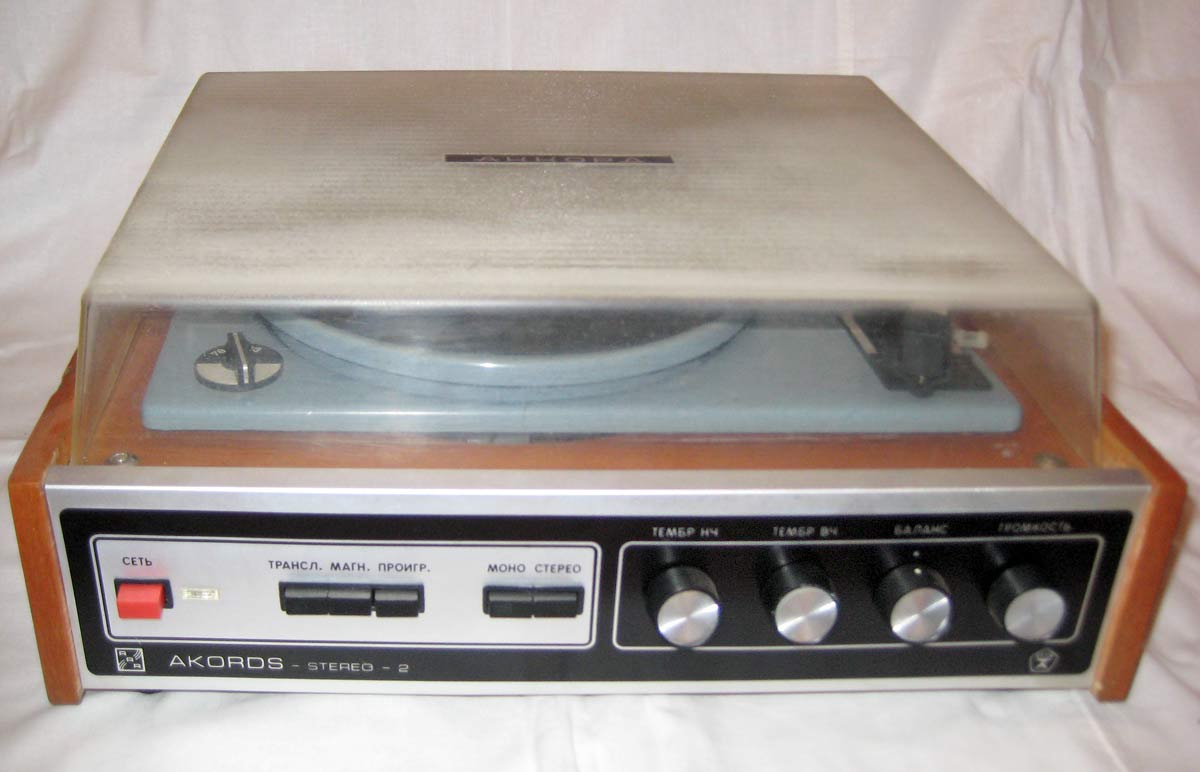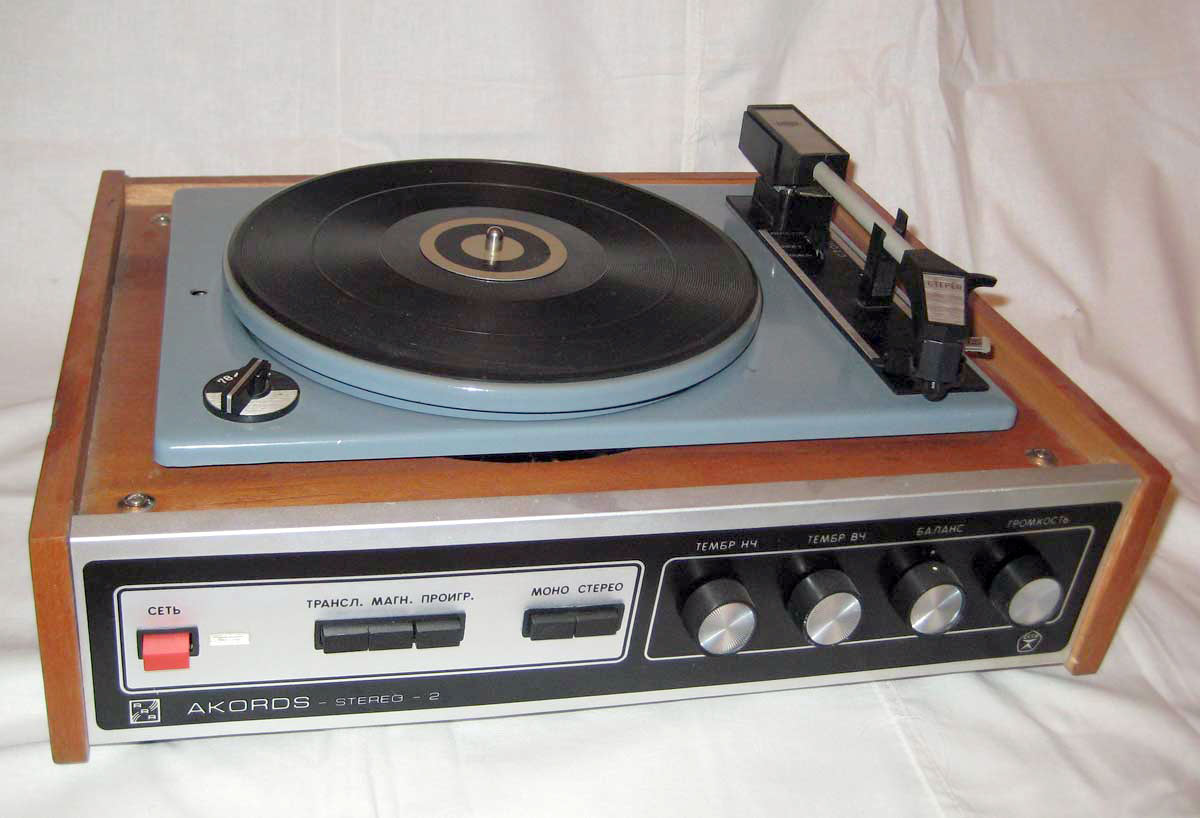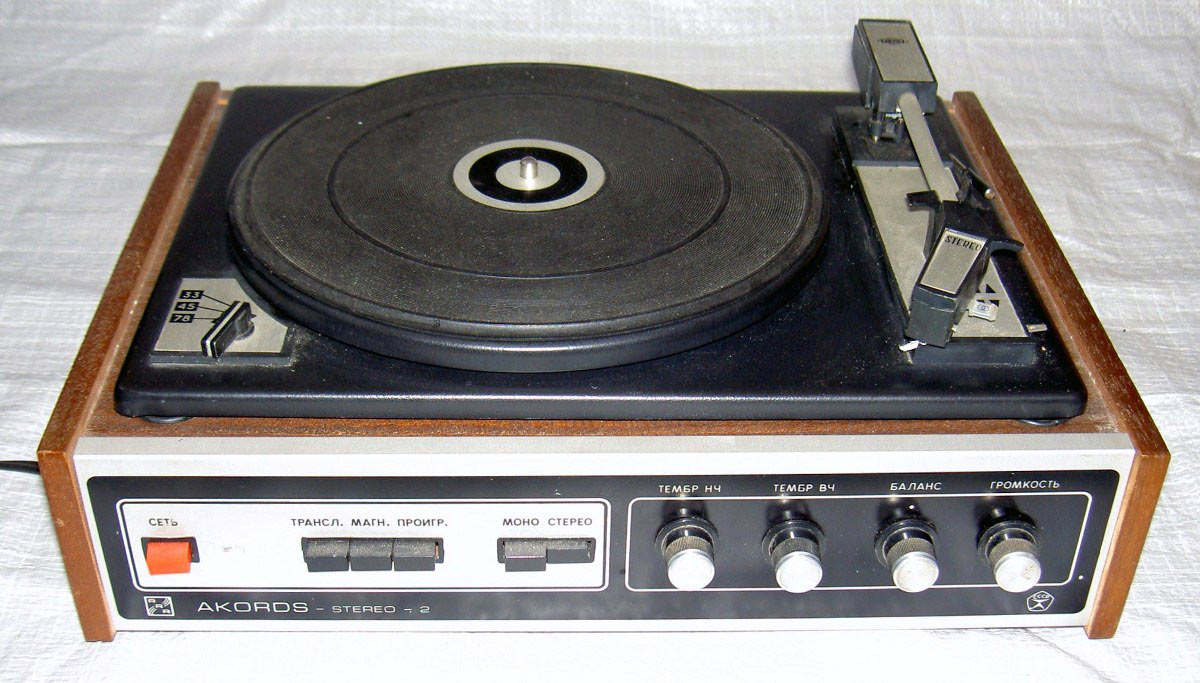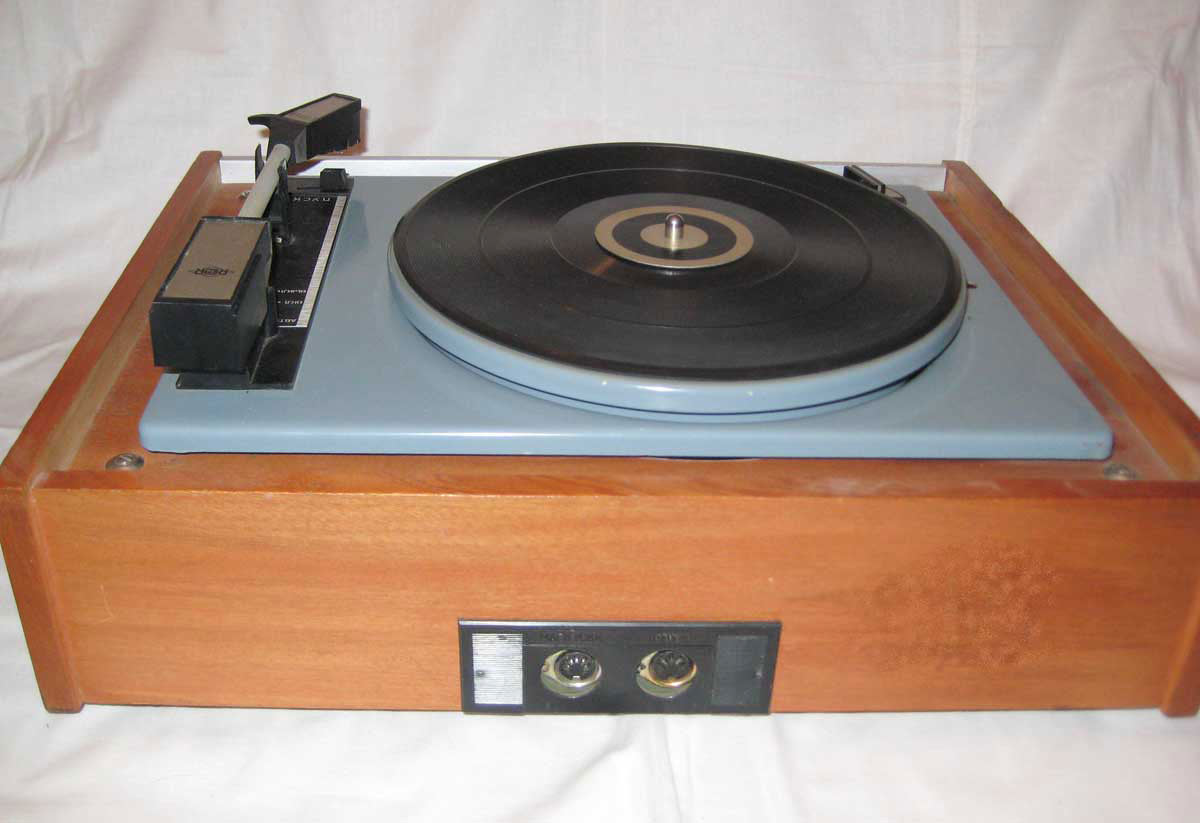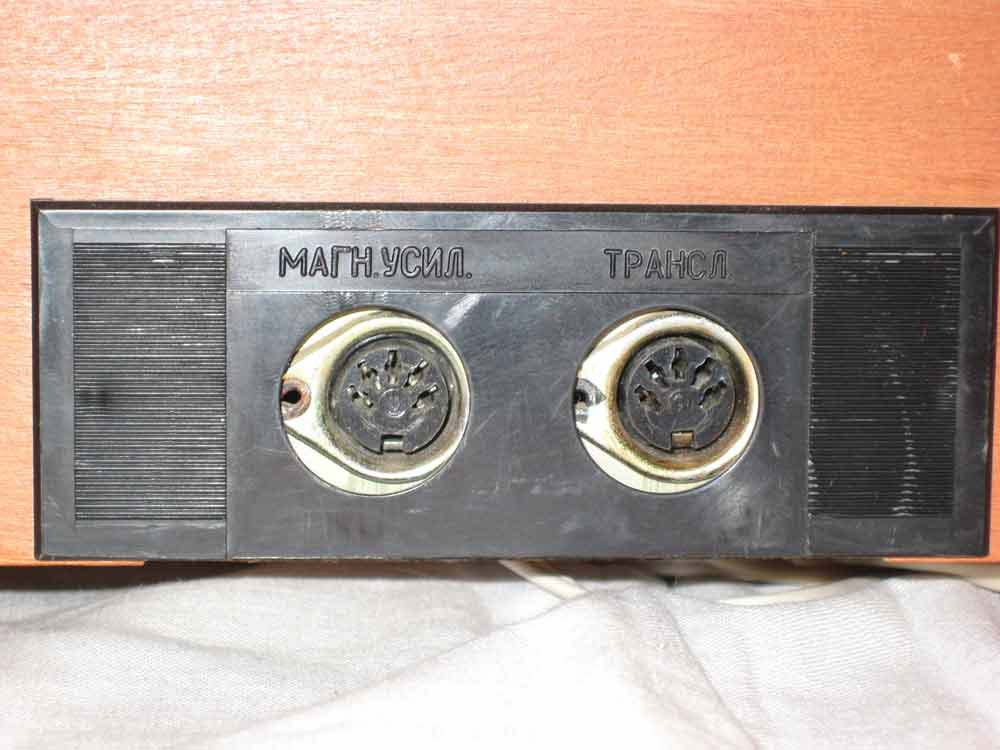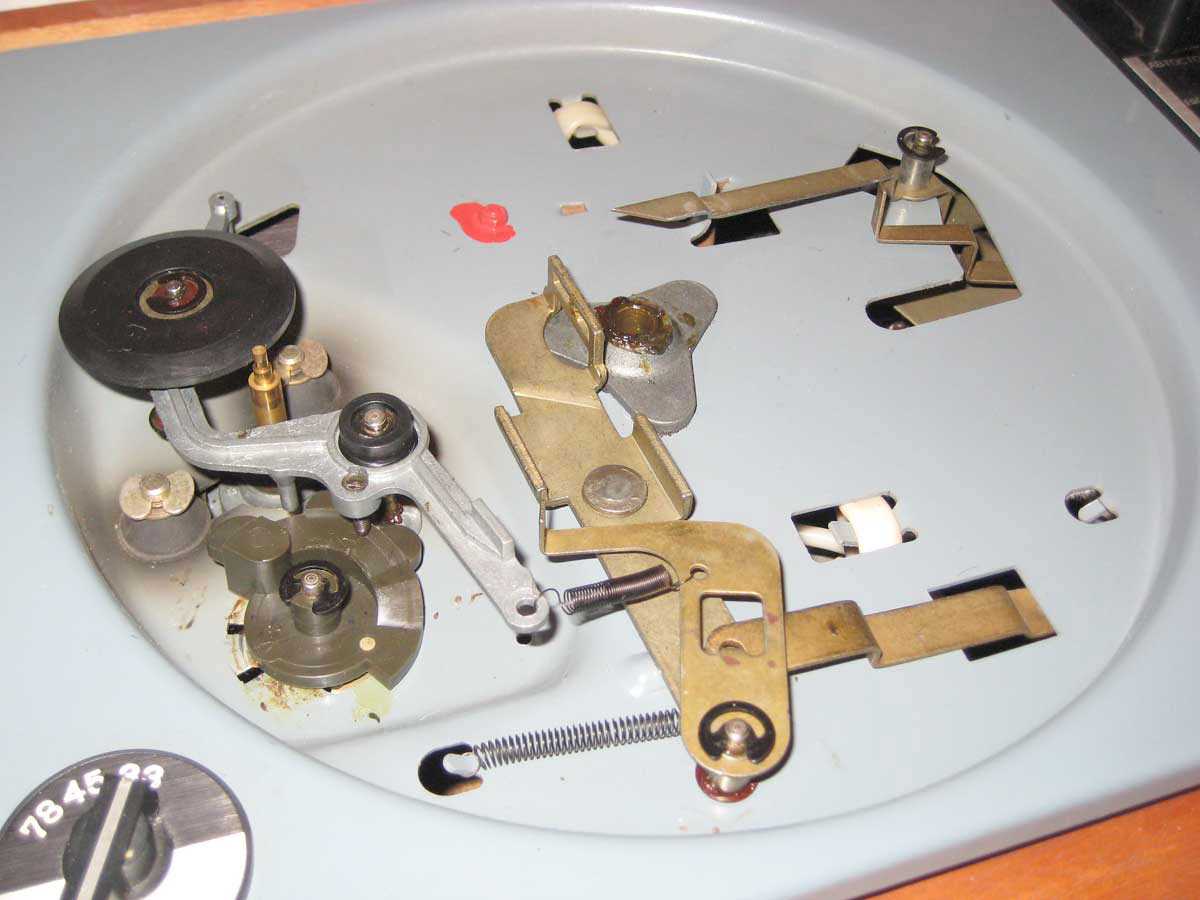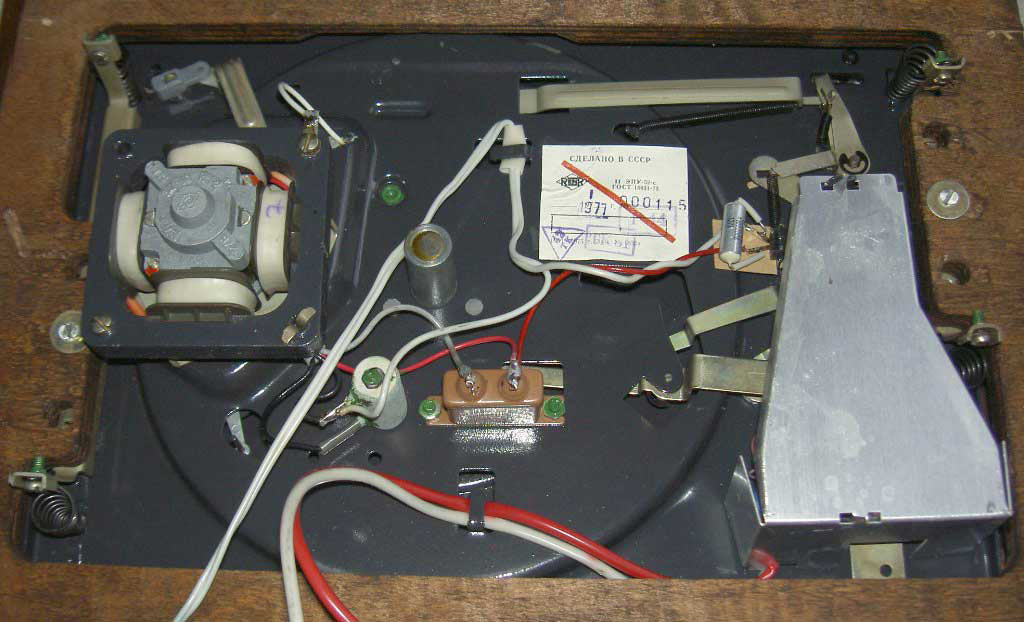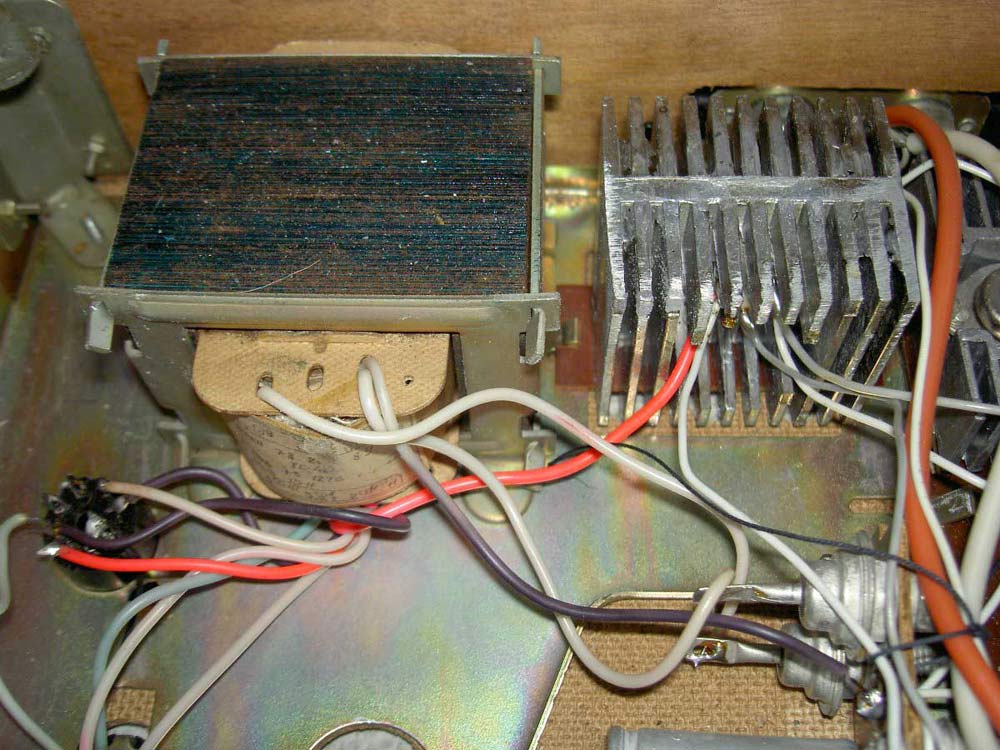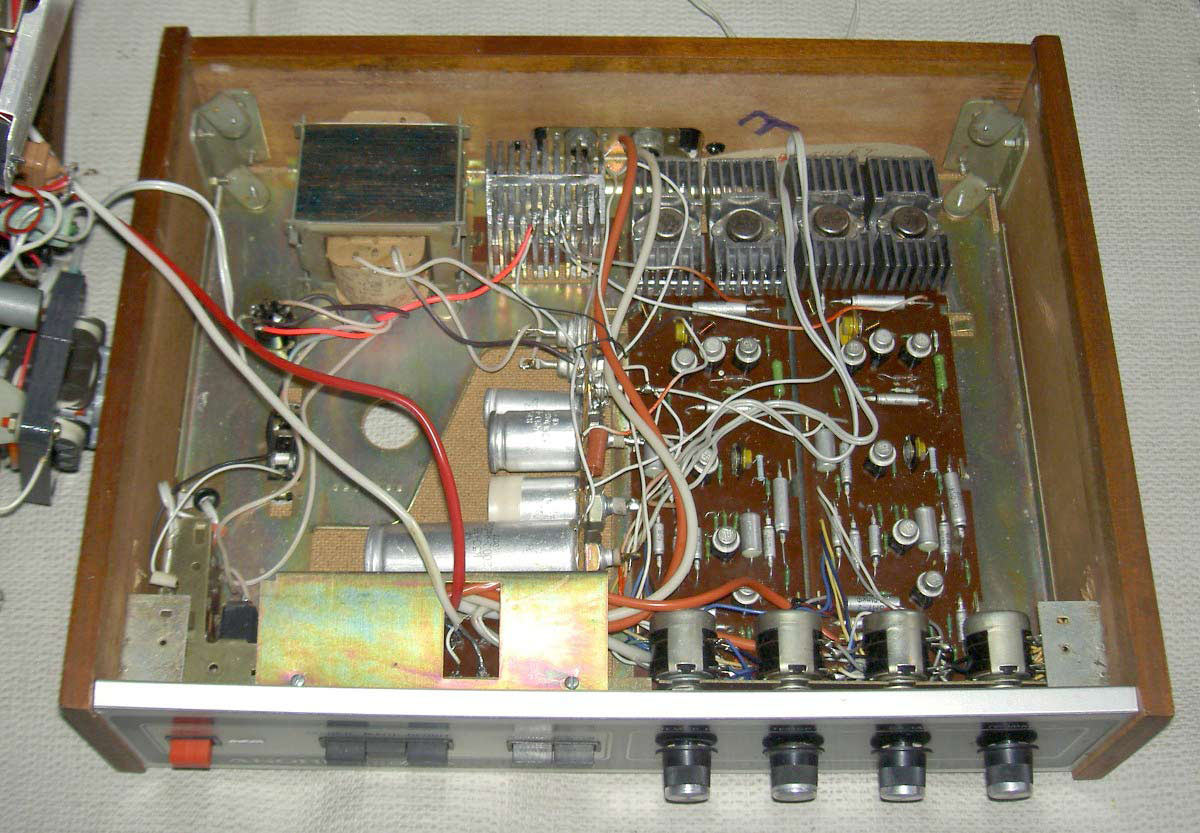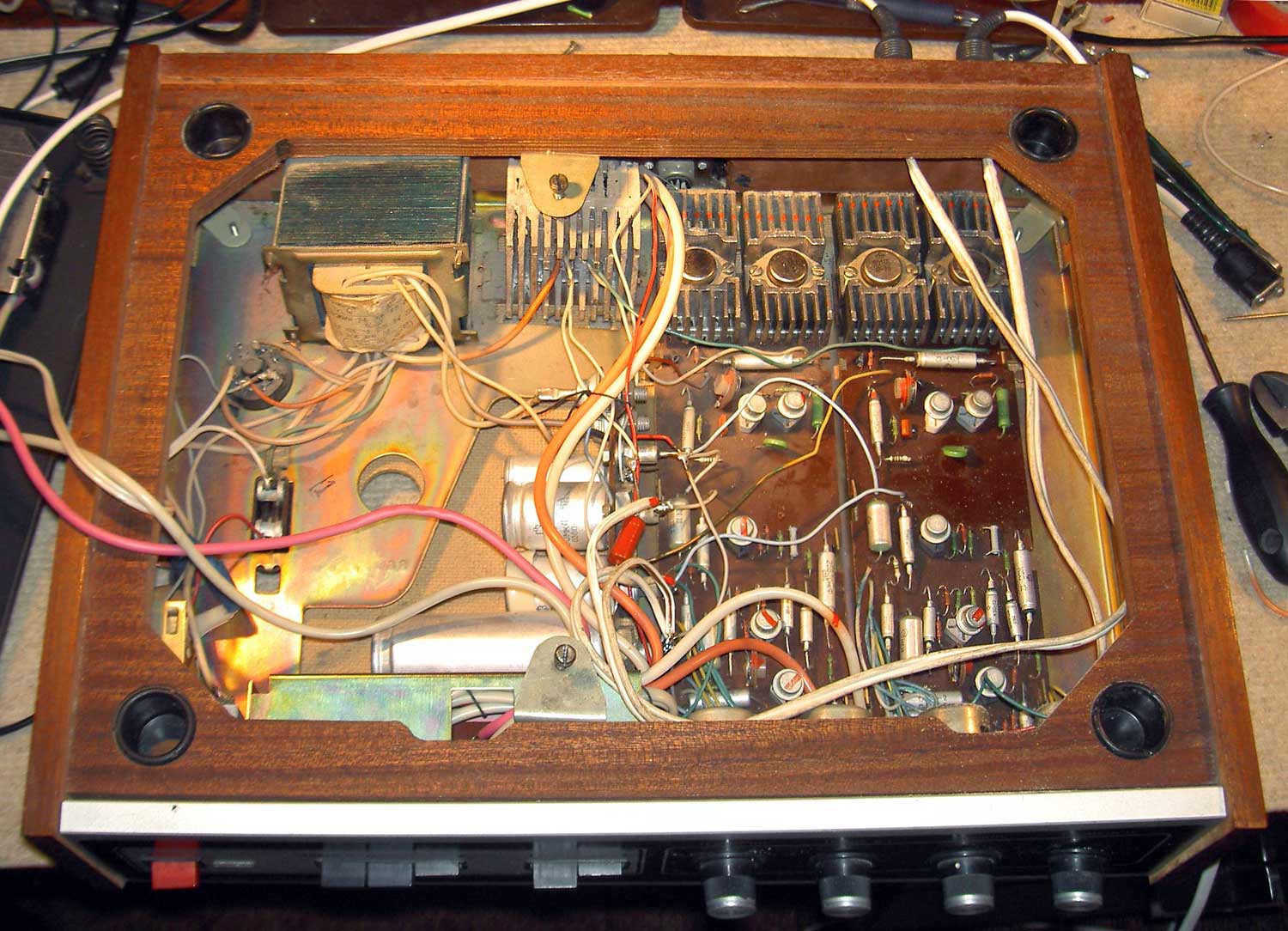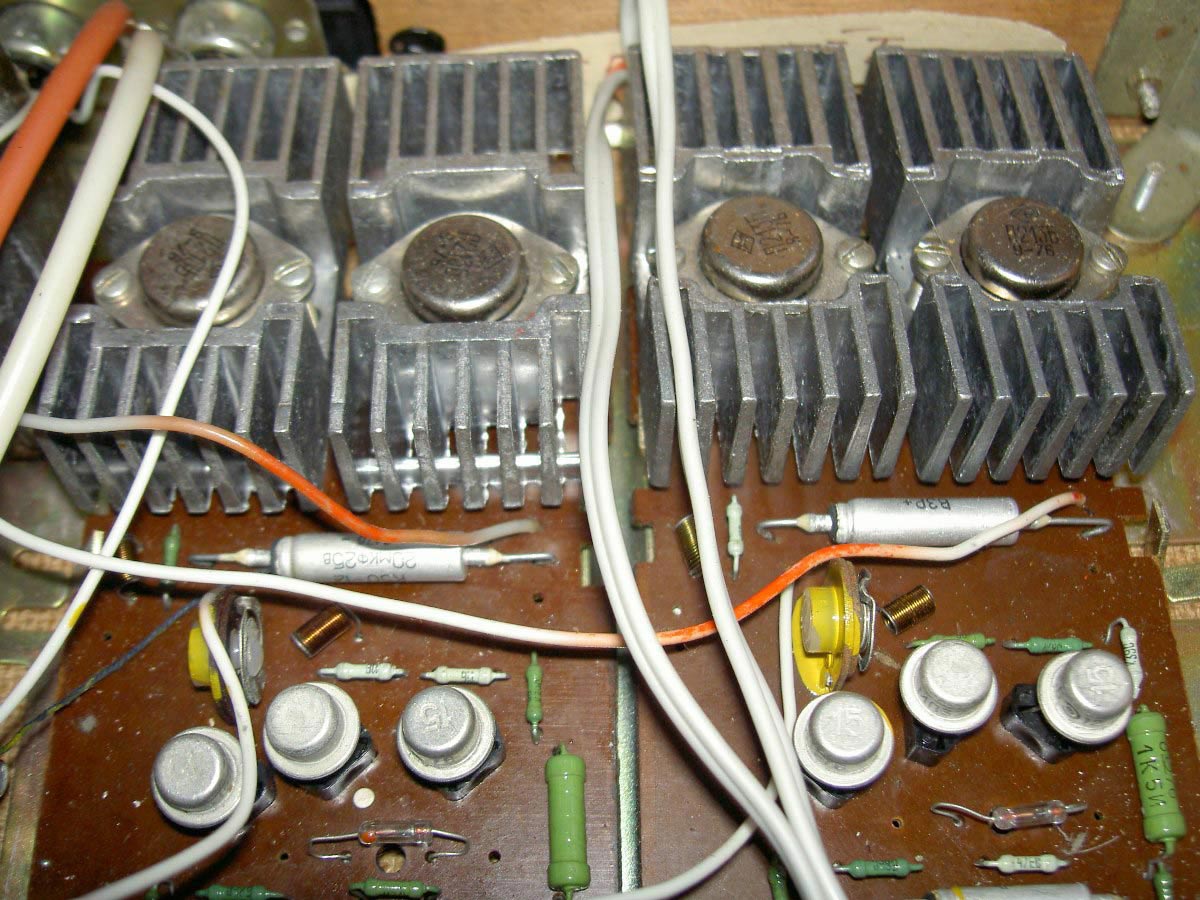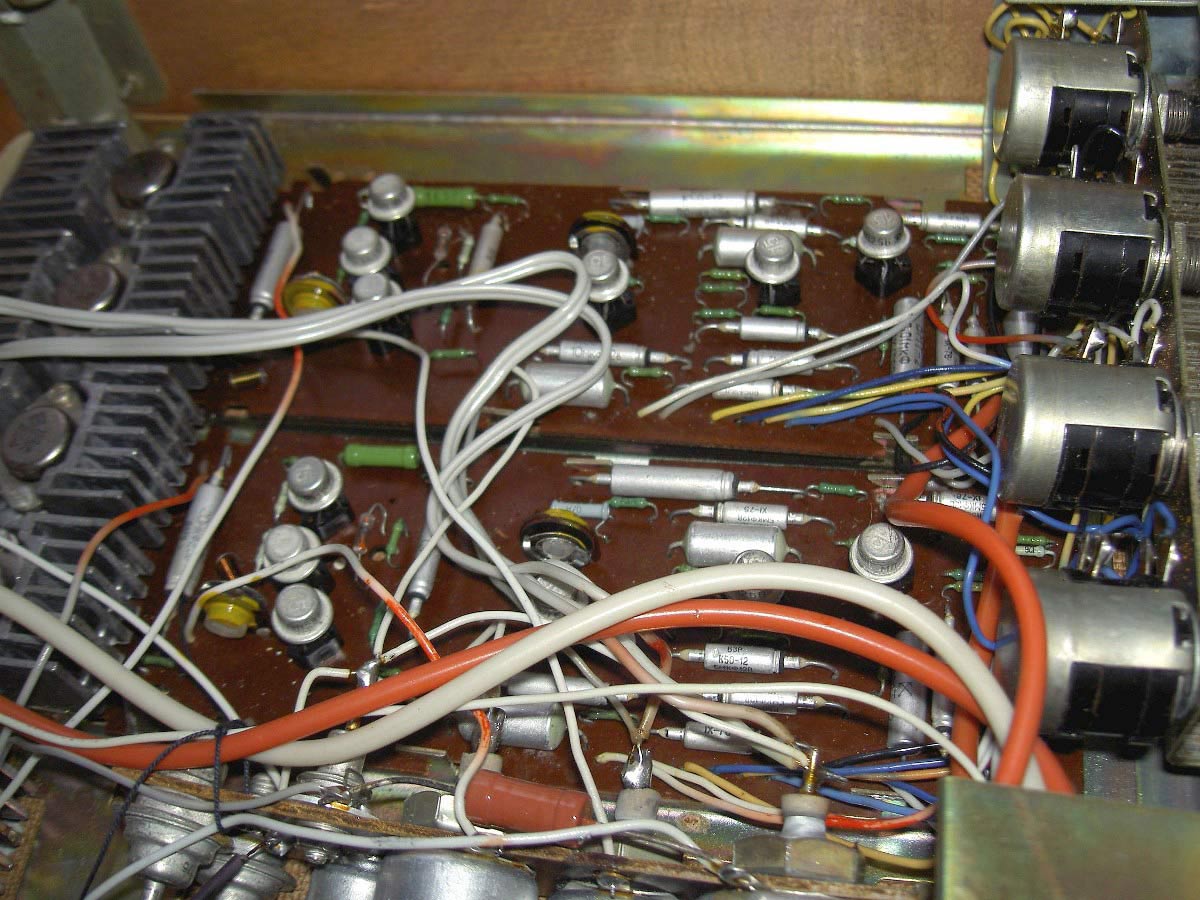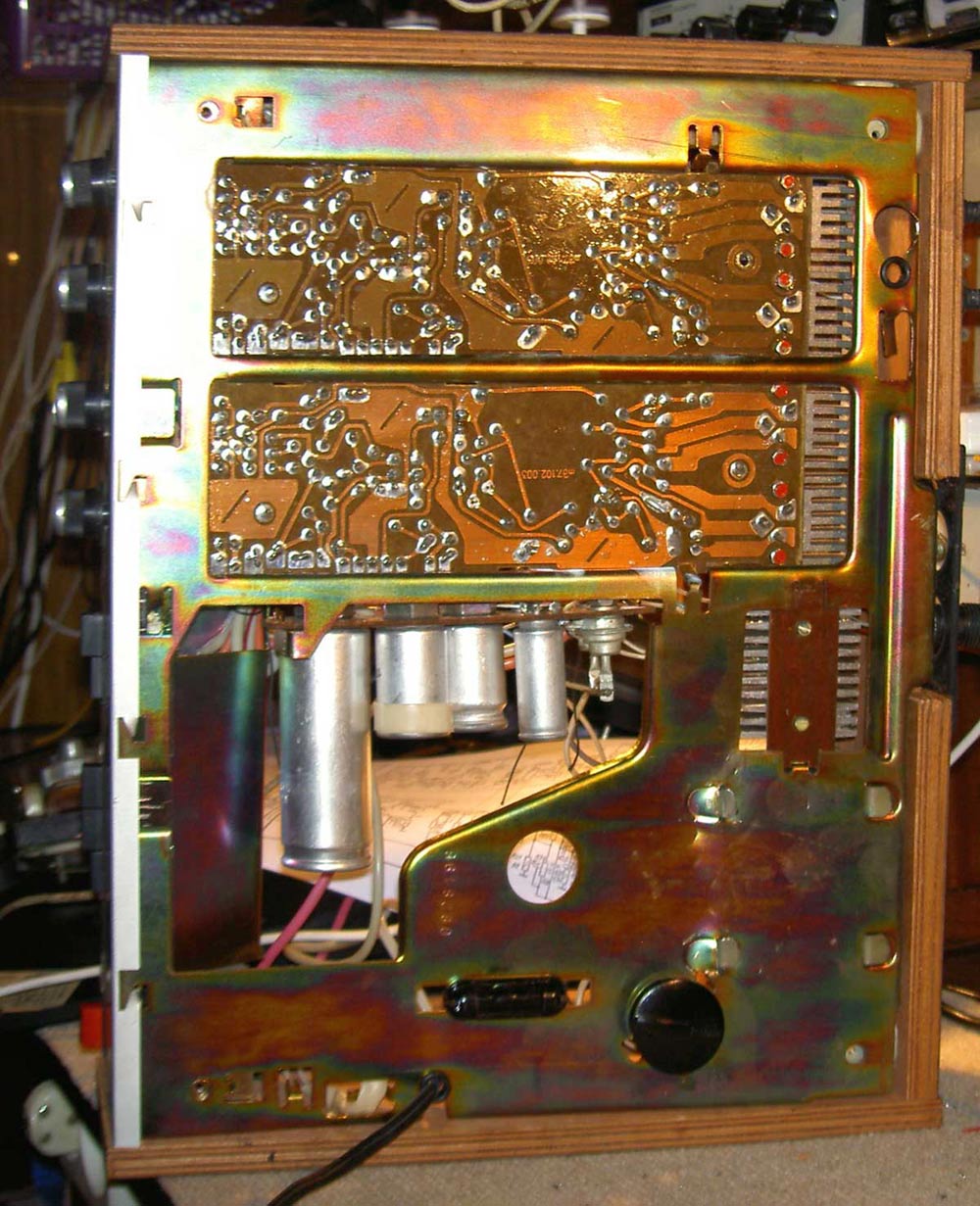Transistor network electrophones "Accord-Stereo" and "Accord-Stereo-2".
Electric record players and electrophones on semiconductorsDomesticTransistor network electrophones "Akkord-Stereo" (IIEF-71C) and "Akkord-Stereo-2" since 1970 and 1975, respectively, were produced by the Riga EMZ. Electrophones are developed on the basis of the "Accord" model and are designed to play mono and stereo phonograph records of all formats, and also allow you to broadcast programs from a receiver and tape recorder with speakers of the worst quality. The EF has smooth control of timbres for bass and treble, stereo balance, a jack for connecting a tape recorder and another source of programs when used as an amplifier, and a jack for connecting a radio transmission line. The nominal output power of each amplifier channel is 3 W with a THD of 2%. Maximum output power 6 watts. Sound frequency band but sound pressure 80 ... 12000 Hz, with a total uneven frequency response of 14 dB. The average acoustic sound pressure of the channel is 1.2 N / m2. The sensitivity from the EPU and the tape recorder is 200 mV, from the radio line 12 V. The limits of adjusting the low frequencies at a frequency of 100 Hz are 16 ... 23 dB, high frequencies at a frequency of 10000 Hz are 4 ... 17 dB, the stereo balance is 10 dB. The background level from the input of the amplifying path is -52 dB, for the entire path -46 dB. The microphone is powered by an alternating current with a voltage of 110, 127 or 220 V (50 Hz). Power consumption when playing records 40 W. The dimensions of the microphone are 158x392x315 mm, for one speaker 270x363x122 mm. EF weight 13.5 kg. To expand the names of products in 1975, together with the release of the "Accord-Stereo" electrophone, the plant produced the "Accord-Stereo-2" electrophone, which differed little from the base one. Three and four-speed EPUs were installed in the electrophones.